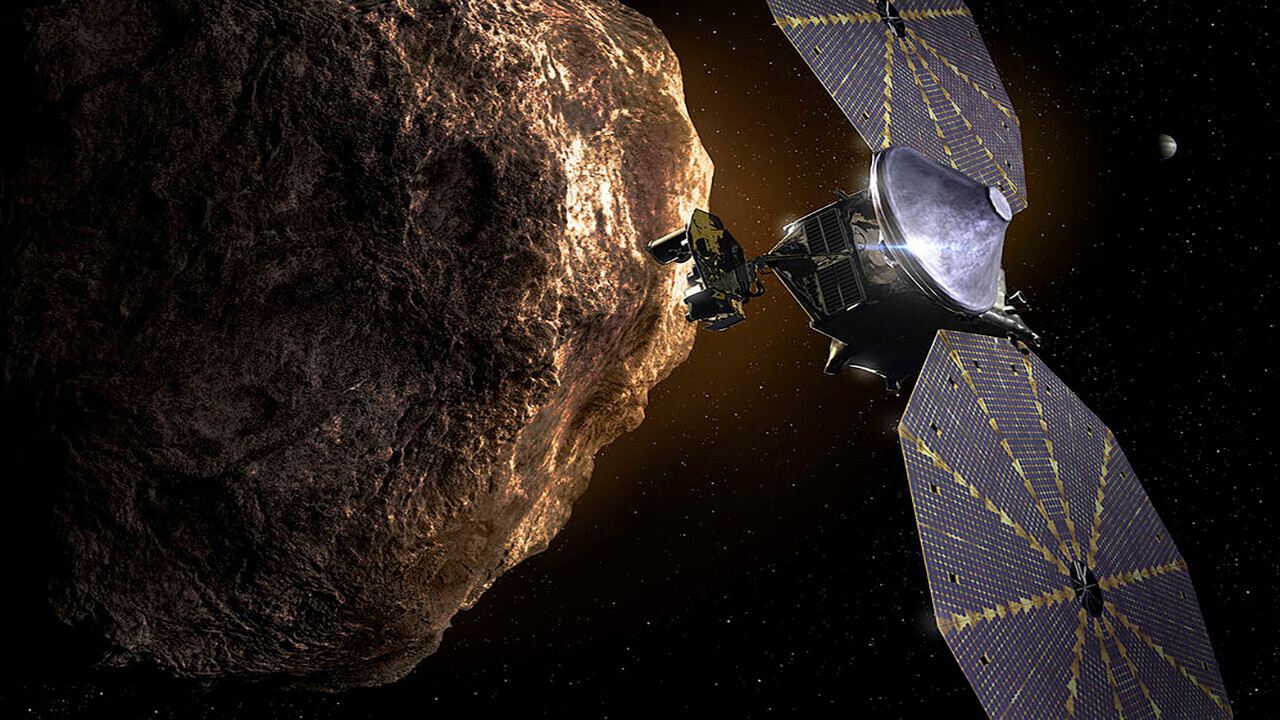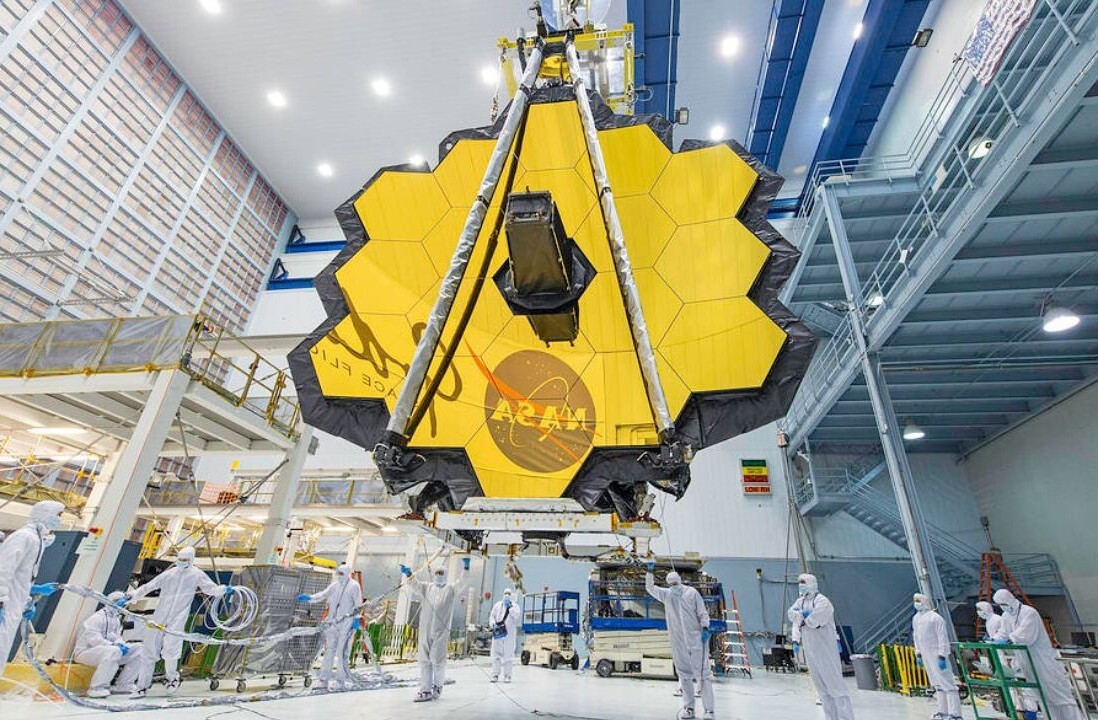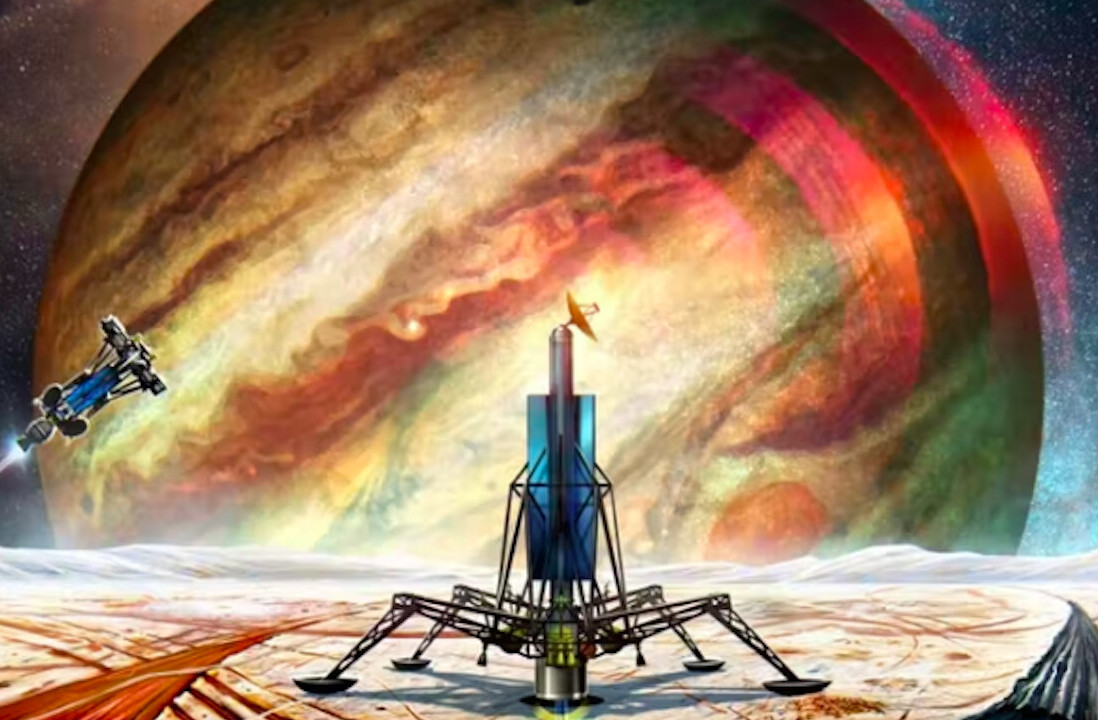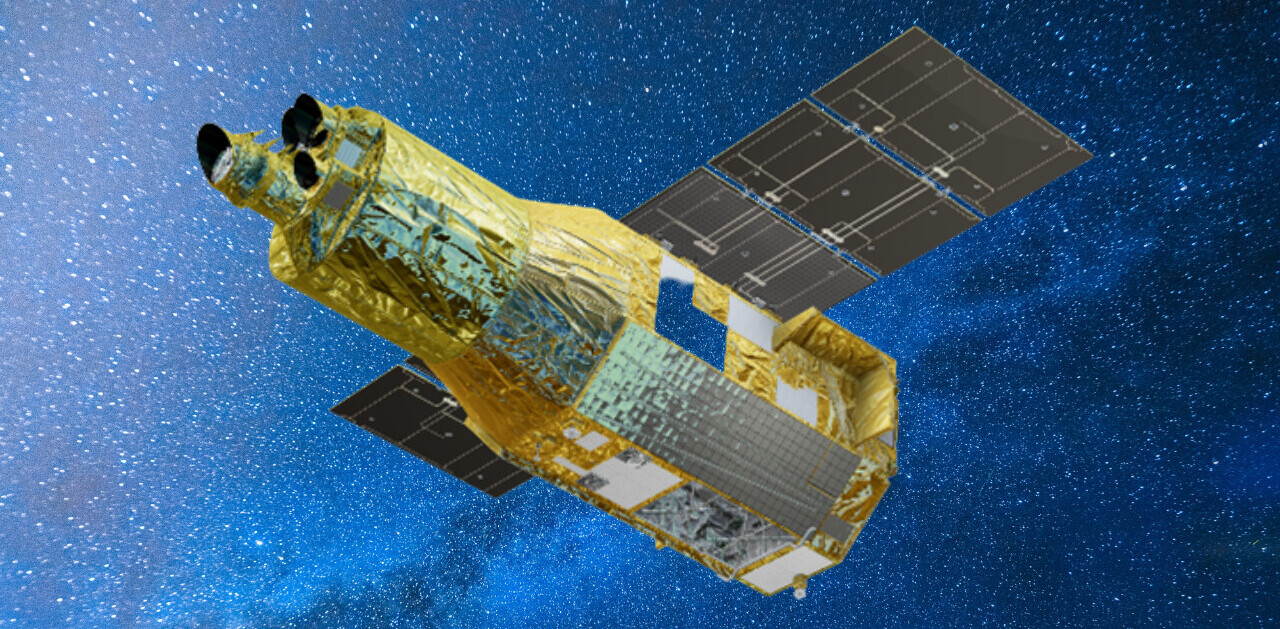On 30 July, an Air Force C-17 cargo plane touched down on a runway at NASA’s Kennedy Space Center in Florida. A massive shipping container was rolled off the craft. The precious cargo inside, revealed in an Astrotech cleanroom, was examined, and cleared by inspectors.
The Lucy spacecraft had arrived safely at the space center, readying for its upcoming historic mission. This vehicle, designed by the Southwest Research Institute, will be the first to visit the Trojan asteroids which accompany Jupiter on its orbit around the Sun.
If everything goes according to plan, an Atlas V 401 rocket will lift the Lucy spacecraft into space, sometime between 16 October and 8 November.
Lucy, Lucy, Lucy…
Lucy (the spacecraft) was named in honor of Lucy, an early hominid found in Ethiopia in 1974. Lucy (the early hominid) was, in turn, named after the Beatles song, Lucy in the Sky with Diamonds.

Just as Lucy (the early hominid) provided researchers glimpses into the development of early humans, researchers hope for similar insights into the history of our own solar system.
“Over its twelve-year primary mission, Lucy will explore a record-breaking number of asteroids, flying by one main belt asteroid and seven Trojan asteroids. Lucy also incorporates three Earth-gravity assists to reach the Trojan swarms and accomplish these targeted encounters,” NASA explains.
Tag-a-long Asteroids
The Trojan asteroids of Jupiter are found in two groups, orbiting just in front of, and behind, the King of the Planets. Astronomers conclude these tag-along asteroids are composed of some of the earliest material in the solar systems. Studying these cosmic third-wheels could reveal secrets of the early Solar System.
“The spacecraft will encounter the first of its eight targets, a main belt asteroid, in 2025. Lucy will reach the first of seven Trojan asteroids in 2027 and fly by the final binary pair in 2033. Lucy incorporates three Earth-gravity assists in an epic flight to these amazing, record-breaking encounters,” said Dr. Cathy Olkin, Lucy’s deputy principal investigator.
The 46-foot-wide Lucy spacecraft is powered by a pair of massive solar panels, nearly seven meters (24 feet) across. These behemoth collectors will allow Lucy to operate on solar power while at the orbit of Jupiter — a task which has never before been accomplished.
“The spacecraft is beginning its final round of testing and pre-launch checks, which include software, instrument, powered function, propulsion propellent load and telecommunication system tests as well as spacecraft self-tests,” SwRI reports.
The Lucy mission promises a wealth of data for astronomers seeking to understand the nature of our solar system.
This article was originally published on The Cosmic Companion by James Maynard, the founder and publisher of The Cosmic Companion. He is a New England native turned desert rat in Tucson, where he lives with his lovely wife, Nicole, and Max the Cat. You can read the original article here.
Get the TNW newsletter
Get the most important tech news in your inbox each week.





